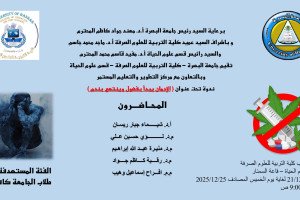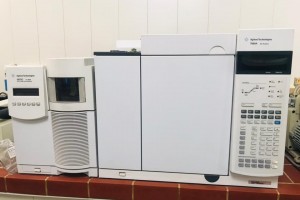
I discussed a master’s thesis in the College of Education for Pure Sciences, Department of Chemistry at the University of Basra, about (preparation and diagnosis of pharmaceutical azo dyes and their applications as new antibiotics)
The thesis presented by the researcher (Muthanna Mahmoud Matar) included five main themes
The first axis included the preparation of some new mono-azo group azo dyes (L5, L3, L1) derived from sulfamethaxazole, paracetamol, tyrosine and nortyrosine, and the second axis was the preparation of binary azo dyes (L6, L4, L2) derived from sulfamethaxazole and mono dyes. The third axis represented the diagnosis of the prepared dyes using infrared (FT-IR) spectroscopy, as well as diagnosed by H1NMR and C13NMR spectroscopy and diagnosed using mass spectrometry. In the visible region for a range of wavelengths (600-340nm) and the ionization constant and protonation were calculated using the half-height method, and the visible spectra of the dyes prepared by the influence of a number of solvents were studied. The sensitivity of the spectroscopic method for the prepared dyes at the greatest wavelength. The fifth axis was represented by studying the biological efficacy of mono and diploid dyes on five types of bacteria, negative and positive for Karam dye. Too much red blood cells
The message is intended
To the preparation of six azo group mono- and bi-azo group dyes derived from aromatic sulfamethoxazole amine, paracetamol, tyrosine and nortyrosine as phenols, and characterization of the prepared azo dyes.
And studying the effect of pH on it and calculating the dentin and ionization constants.
And study the effect of polarity of organic solvents and know the effect of dipole and solvation.
Calculation of the values of the molar absorption coefficient, standard deviation, correlation coefficient, limits of detection, Sandel sensitivity and applicability of Beer's law to the prepared dyes.
And the study of the biological activity of dyes on six types of bacteria, and the measurement of the minimum inhibitory concentration and the minimum lethal concentration, measurement of the toxicity of compounds








